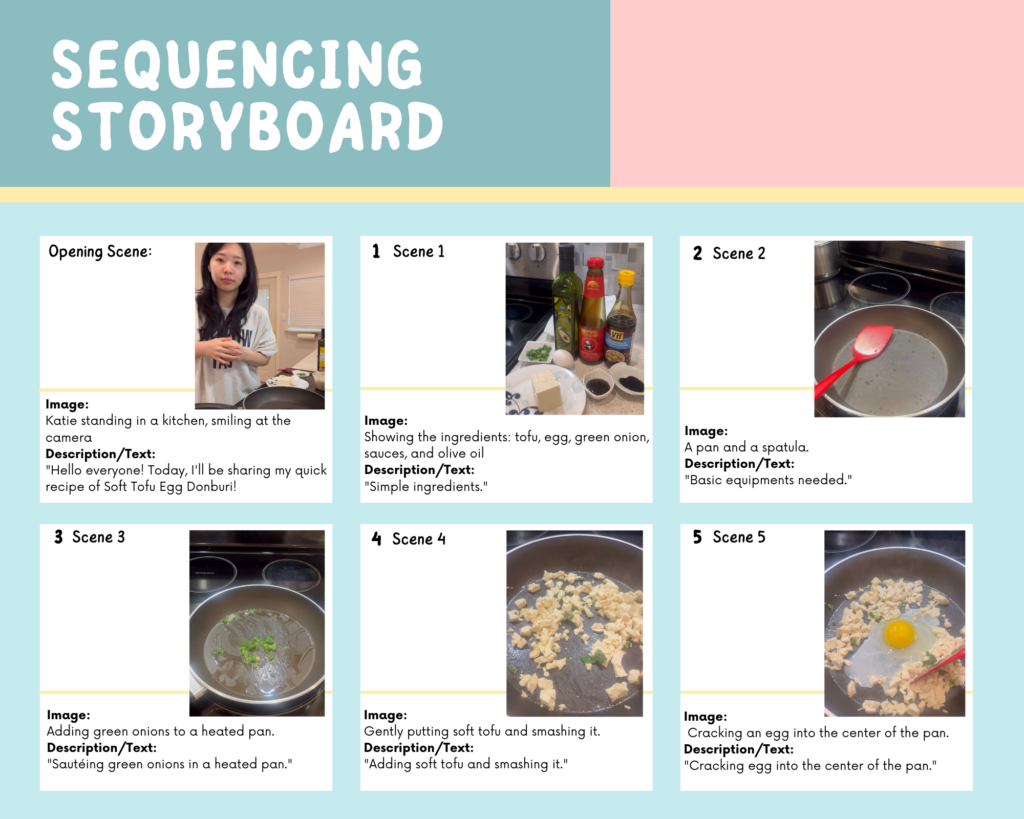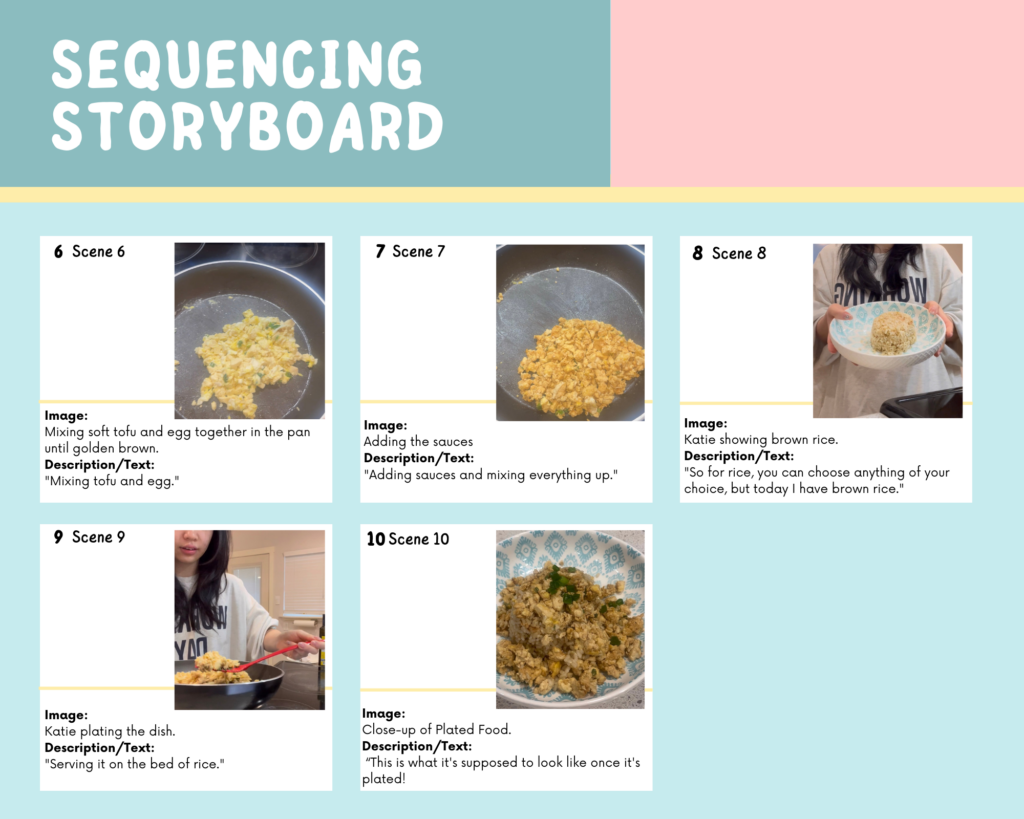- https://edci337amiraelhafi.opened.ca/2024/03/09/110/#comments
- https://edci337amiraelhafi.opened.ca/2024/02/20/blog-post-3-storytelling-and-creating-video/
- https://maikagaerlan.opened.ca/2024/03/06/module-3/
- https://kylieo.opened.ca/2024/03/09/blog-3-storytelling-and-creating-video/#respond https://edci337
- https://edci337amiraelhafi.opened.ca/2024/03/25/blog-post-5-generative-ai-and-evaluating-content-and-tools-for-learning/#comment-13
Month: March 2024

AI Tools Exploration
I have experimented with Sketch AI and Stable Diffusion to explore the extended capabilities of AI. Transforming drawings into animations was particularly enjoyable. I believe this feature could be incredibly beneficial for parents seeking to animate their children’s drawings, enhancing their creativity and providing an engaging activity to do together. Additionally, as I delved deeper into the capabilities of AI, I was fascinated by its potential! While the images generated by AI are not perfect, the overall quality is remarkable. It almost felt like stepping into a time machine and seeing the advancements firsthand.
Prompt: Draw me a vision of the Hyundai Company in the year 2080, imagining that we are living in the sky.

Fig. 1. “Hyundai Company in the year 2080, imagining that we are living in the sky.” prompt, Stable Diffusion, version 2.1, OpenAI, 21 Mar. 2024, https://stablediffusionweb.com/

Fig. 2. “Hyundai Company in the year 2080, imagining that we are living in the sky.” prompt, Stable Diffusion, version 2.1, OpenAI, 21 Mar. 2024, https://stablediffusionweb.com/
Fig. 3. “Doraemon Animation” generated by Sketch AI, Version 2.1, OpenAI, 20 Mar. 2024, https://sketchai.app/
Fig. 4. “Doraemon Animation” generated by Sketch AI, Version 2.1, OpenAI, 20 Mar. 2024, https://sketchai.app/
What Generative AI applications have you found useful?
I have been actively using ChatGPT-3 for grammar checks and revising my work. As a business analyst, it has proven invaluable in helping me refine my wording to align with professional standards, especially as I navigate my first corporate role! Additionally, I rely on ChatGPT for conducting research efficiently during my work hours. It serves as an excellent initial resource for gathering surface-level information without the need to individually search for each topic.
What apps have you used that are not in the Explore section?
Other than those in the Explore section, I utilized Bard in Korea. It is a Generative AI developed by Google to compete with ChatGPT. During my exchange, it seemed that Korean students perceived Bard as more reliable. From my own experience, ChatGPT has more trained data and capabilities than Bard. I asked both Bard and ChatGPT a very simple question: ‘Who is the first Korean president?’ Bard replied, ‘I’m still learning how to answer this question. In the meantime, try Google Search,’ whereas ChatGPT replied, ‘The first President of South Korea was Syngman Rhee. He served as President from 1948 to 1960 when he resigned following widespread protests against his government.’ It was interesting to see how Bard recommended I use Google Search, given that Google creates Bard. I wonder if the integration has not been done properly. Bard also lacks the simple capability of grammar checking. Using Bard could be very helpful in conducting initial research on specific academic topics.
What guidelines do you think should be in place to guide the use of Generative AI in an educational institution?
As ChatGPT-3 becomes increasingly popular among students, there has been an ongoing controversial discussion surrounding its usage for quite some time. I’ve engaged in discussions about incorporating Generative AI tools in educational and professional settings. I believe that Generative AI tools are invaluable when used appropriately and they should be encouraged to use.
ChatGPT has revised this one paragraph below – Do you notice how the tone and choice of vocabulary (bolded) are much more professional than my writing?
Having utilized ChatGPT for approximately a year, I’ve observed certain limitations to its capabilities, particularly in educational and professional contexts. While it can offer assistance and generate content, there are constraints to its depth of understanding and ability to produce nuanced work. In terms of citing ChatGPT, I advocate for its recognition as a source of compiled information, similar to how one would cite information obtained from Google. Indeed, I don’t perceive a significant distinction between the two; both provide access to a wealth of information, albeit through different mediums. Ultimately, it’s crucial to approach the use of ChatGPT with the same level of critical thinking and responsibility as any other informational resource.
Considering the content of this paragraph, I strongly believe the use of Generative AI should be encouraged among students, given that there are clear guidelines for paraphrasing and citation to maintain the coherence of their work.
Concerns have been raised among educators regarding the potential stifling of innovative thinking by relying on generative AI. However, I disagree with the notion. Individuals have diverse learning styles, and there is room for every type of learner. While some students may lack creative skills, they excel in areas such as quantitative analysis or tasks with straightforward answers. Generative AI could serve as a valuable tool for students who struggle with creativity by offering initial guidelines for brainstorming. At the end of the day, how different is this from utilizing search engines like Google? It is crucial to emphasize that output generated by ChatGPT should never be directly copied and pasted. Leveraging Generative AI also requires skill, as detailed prompts are needed to get the desired results effectively.
What factors should be considered?
I believe the main controversy and ethical considerations surrounding generative AI involve security and data privacy. As mentioned in Module 5, there have been numerous cases where ChatGPT faced lawsuits for using content as training data without attribution or compensation. While it only takes a few seconds for users to input a prompt and receive results, the individuals who originally generated that content invested years of effort, time, money, and passion into its creation. Even if users cite Generative AI as a source of information, it does not acknowledge the efforts of those who generated the content provided by AI. I believe there needs to be more work put in on providing citations within ChatGPT itself.
Roleplaying Game prompts
It is truly fascinating how much Generative AI can achieve and how many more possibilities people can explore using these tools!
I tried out ‘Mafia Nicknames’ and ‘ChatGPT Password’. I believe the key to a successful experience with generative AI games lies in creative thinking. When selecting nicknames for the mafia, I had to be exceptionally creative to achieve my goal of receiving a perfect 10/10 for the nicknames I created. ChatGPT was a tough crowd. The highest score I received was sadly a 9. I do not typically play games, so I cannot compare it to anything else. However, in terms of creativity, I find ChatGPT to be quite subjective and lacking in providing criteria to support its decisions. It gave me scores but did not explain why – reasoning.
Additionally, ChatGPT often generates different responses with even the slightest modification. For instance, when I created the nickname ‘Tickling Finger,’ it initially scored a solid 7. When I tried ‘Tickling Fingers,’ it scored a solid 8, when the only difference was the addition of an ‘s’ at the end.
H5P interactivity using ChatGPT
Give it a try – select “sunshine” as your answer. It is incorrect. The correct answer is ‘rain’.
I wanted to assess ChatGPT’s capabilities, so I quickly created the H5P activity without thoroughly reviewing the question or the choices. Afterward, as I repeatedly clicked “sunshine” to test it, the response kept turning up as ‘red,’ indicating it was incorrect. I was so confused. I later realized upon reading the question that the answer provided by ChatGPT was wrong.
Through this exercise, I have concluded that ChatGPT does provide inaccurate information. As evidenced below, ChatGPT incorrectly states that sunshine is responsible for the formation of rainbows. It is significantly important to verify information provided by ChatGPT for accuracy!

SECTIONS analysis of Canva
- Students:
- Canva is perfect for students. It is a website-based tool that requires no download. Canva can be easily accessed using laptops, phones, iPads, or any type of electronic device connected to the internet and requires only a basic minimum wifi connection. The only barrier Canva might present is for students who are not very tech-savvy. However, Canva offers a great step-by-step guide to designing from scratch. Additionally, there are numerous YouTube videos available on creating cool content using Canva!
- Ease of use:
- Canva is super user-friendly! With its simple and intuitive user interface (UI), people can create professional-quality designs without too much effort. Its drag-and-drop functionality, huge selection of pre-designed templates, elements like icons and images, and customization ability make the designing experience easy, enjoyable, and accessible even for those without prior design experience.
- Costs:
- Canva has four tiers priced differently to suit various needs. Most features are free, making Canva a great tool for educational purposes. However, some icons, templates, images, etc., are available only in premium at CAD 149.99, which might seem expensive for students. Other than the pricing, from a pure cost perspective, using Canva does not require an excessive amount of time and effort to create content. It is very user-friendly!
- Teaching:
- Teachers can use Canva to create teaching materials tailored to their specific learning objectives. The wide range of features available enables educators to create engaging educational content. Also, Canva facilitates live collaboration, fostering interactive learning experiences where educators and learners can collaborate in real-time, promoting active learning. Lastly, as mentioned earlier, Canva’s user-friendly interface makes it accessible to teachers of varying skill levels, requiring minimal expertise or knowledge.
- Interaction:
- Canva’s real-time collaboration feature fosters active interaction between educators and learners. Observing progress in real-time, exchanging ideas, and receiving immediate feedback enhances the connection between educators and learners. This also fosters a collaborative learning environment where students can seamlessly work together on projects and share ideas.
- Organization:
- I am not 100% sure if this is relevant to the ‘Organization’ aspect, but I know that UVic DSC offers workshops on Canva. I have attended one and these workshops offer valuable skills that students can add to their toolkit, helping them become more proficient with the platform.
- Networking:
- One aspect that I could think of is its capability to invite people into your ‘Group’. For example, educators can invite a professor from the Marketing department to collaborate and teach students how to create powerful marketing campaigns using Canva. Or, the Co-op Program Director teaches how to create a resume using Canva. This feature enhances collaboration and allows for passive and active learning experiences, enriching the educational process.
- Security and privacy:
- While I am not quite familiar with the security and privacy measures around Canva at UVic, I am aware that Canva uses encryption and other tools like MFA to ensure that designs and data are securely stored and managed. When using Canva for creating PowerPoint slides or other school projects, it is important to consider the privacy settings. Users should be mindful of whether the content could be set as publicly available or accessible only via links or when added to designated ‘Groups’ to maintain control over who can access the materials.

What authentic problem would you use to design a lesson using Merrill’s principles?
Authentic Problem
I am currently working as a junior business analyst at a startup SaaS company. Two current projects I am actively involved in include updating the customer health index. While updating the customer health index for February, I noticed an increasing number of unhealthy customers compared to January, resulting in higher churn rates. As a junior BA, I aim to analyze the factors contributing to this issue and develop actionable strategies to improve user engagement and reduce churn.
Activation and Demonstration
All team members have access to and have prior knowledge of measuring healthy customers, commonly used in tech companies. These metrics include engagement rates, churn rates, expansion rates, NPS scores, and customer effort scores. Therefore, this information can be used to visualize to identify patterns and trends. This process enables me to formulate data-driven insights and recommendations. Once I draw meaningful insights, I can create an infographic of 3 – 4 main factors contributing to higher churn rates so that the audience can absorb new information more effectively.
Application & Integration
Once I present new information/knowledge, I could provide opportunities for learners to apply their analytical skills and knowledge to the problem. This could involve analyzing real data sets from the company’s software platform and user surveys or interviews. To integrate into the ‘real world’, I could facilitate discussions and team activities where learners can integrate their findings and insights into a comprehensive action plan.
Here is the learning template! – simpler version than the above
What media or multimedia (interactive or not) would you create to support it?
I believe that creating an interactive video is most useful in this scenario as the problem requires active learning. I aim to create a safe learning environment where learners can practice analytical and data-compiling skills as they progress through my video. I could develop an interactive video where I demonstrate the analysis of a dataset, explaining how to transform datasets into various visualizations such as pivot tables, infographics, and real-time data visualizations. Throughout the video, I will incorporate elements like quizzes and Cornell notes to ensure that the audience absorbs the information effectively, gaining a thorough understanding of key concepts and enhancing their ability to apply analytical skills to real-world problems. At the end of the interactive video, I could incorporate features such as questionnaires and discussion forums to collect feedback on the video and address any questions or uncertainties that may arise.
How have you found the balance of passive and active learning in this course for your learning? How does it compare to your experience in other courses?
I find the balance between passive and active learning well-executed. Mary provides ample learning materials to achieve the objectives for each module, along with reflection questions and practical exercises for students to explore and ensure their understanding of the materials. As a BCOM student, many courses are primarily lecture-based. Unfortunately, the balance between active and passive learning is often overlooked. Courses tend to be more one-directional, with most ‘active’ learning occurring through bi-monthly group projects. While these projects encourage students to apply what they’ve learned in class, they are not as thoughtfully designed as this course.
What was your experience of trying out H5P? Which of the activities do you think you would make the most use of in your teaching context and what would you use them to do?
I am impressed with H5P. It offers numerous features that can be incorporated into creating teaching materials, making learning more interactive and enjoyable! I tried creating interactive videos using the video from Screencastify exercises, 360° virtual videos of Seoul, and a graph. Creating the interactive video was fairly straightforward and fun; adding quizzes, text, multiple-choice, etc., made the process enjoyable. I believed these elements could greatly enhance the learning experience and ensure that the audience absorbed new information well. However, creating the 360° virtual video was quite challenging, and I am not entirely satisfied with the outcome. I did my best to explore its features and see how far I could go. I thought the virtual video feature could be extremely useful in geography or international study courses, providing a sense of real imagery through essentially a virtual tour.
Here are some of the examples of H5P activities I tried!
360° virtual video
Population by countries (in millions)
Which ones do you think require the most resources to create?
From what I have observed, I believe that features such as Game Map, Timeline, Branching Scenario, and Impressive Presentation would require the most resources to create. Unlike interactive videos, quizzes, accordions, Cornell notes, etc., the four mentioned features often require gathering information and images from multiple sources, as well as complex and well-considered planning, scripting, and execution.
In the reading, Students Need to DO Something, do any of the author’s experiences with passive learning in K-12 classrooms resonate with your own?
I highly resonated with the entire article. Even though I am in my fourth year, I still experience many of the same issues with passive learning that the authors described in K-12 classrooms. Lectures heavily rely on PowerPoint slides, and students are expected to simply write notes. However, most PowerPoint slides are so condensed that I understand only 20% of the content. They are typically in bullet point format, and sometimes it takes professors a long time to explain them, even though they created the slides themselves. I strongly agree that transitioning directly from direct instruction to independent practice to assessment is ineffective; it often intimidates students and makes them feel like failures. This experience is still very relevant and evident at the university level as well.
Why do you think active learning is not more prevalent in K-12?
I think active learning is less prevalent in K-12 education due to the emphasis on achieving high grades and gaining admission to universities. Therefore, K-12 institutions often use traditional teaching styles and standardized testing, focusing on the memorization of facts over the development of critical thinking and problem-solving skills. As a result, teachers frequently concentrate on preparing students for these tests rather than implementing active learning strategies. Moreover, there could be a time constraint. With a fixed curriculum, it may be challenging to allocate enough time for practicing active learning, which typically demands a more extensive amount of time compared to passive learning.
Have you tried using any of these activities in a classroom? Which one looks most appealing to you?
One of my BCOM courses during my third year incorporated many mini-projects and weekly discussions, which greatly enhanced students’ ability to absorb, understand, and apply knowledge through collaboration. These mini-projects encompassed various types, such as research, visualization, and presentations. I found transforming system-thinking designs into visual drawings particularly enjoyable. This process not only allowed me to grasp the interconnectedness of each component but also enabled me to understand why a specific design was effective. The thoughtful design of the course and the interactive nature of the mini-projects made the learning experience engaging and memorable!
Video
Storyboard


Script
Opening Scene:
Hello everyone! Today, I’ll be sharing my quick recipe of Soft Tofu Egg Donburi! I hope you enjoy my recipe.
Scene 1 & 2:
So, these are all the Ingredients that you need which is quite simple.
A 1/4 of medium tofu or soft tofu, some green onions and if you don’t have any, you can skip this, one whole egg, some olive oil, and this is one tablespoon of oyster sauce and a half tablespoon of soy sauce. And for the equipment, all you need is a pan and something to mix all the ingredients with. And for today, I have a spatula.
Scene 3
Okay! Let’s get cooking going. So turn the heat onto medium-high, well let’s put it at 6 and then let your pan heat up. Once your pan is heated up, put a bit of oil. Once the oil is heated up, put the green onions in, and slightly stir it. And let it cook for about 10 seconds.
Scene 4
And then, you will add your tofu in the middle. Lightly smash it down. You want to turn your heat down to low to medium. And just keep mixing your tofu! So once the tofu has turned into yellowish-golden brown, that’s when you want to add the egg.
Scene 5 & 6
Okay, now we’re going to add the egg right in the middle, the center of the tofu! Let your egg sit for just a couple of seconds until the white part turns white. And then, we are going to mix everything together one more time! You don’t want to fully cook your egg because you still want the soft and like velvety texture.
So once you quickly mix your egg and tofu, you want to turn your heat off, completely off. Let it do the continuous cooking!
Scene 7
Okay! Now it’s time to add the sauce. So, half a tablespoon of soy sauce and one tablespoon of oyster sauce. And then, you’re going to mix everything up one last time. Remember, this recipe is for students who are on budget and time constraints, so this recipe is very simple and it only takes about less than 10 minutes to prepare and cook!
Scene 8 & 9:
And once you see the colour has turned into yellowish brown, then you know you are all good to go! This is all cooked, so now let’s plate it on the bed of rice. So for rice, you can choose anything of your choice, but today I have brown rice. But, you can sub it with white rice, oatmeal, or anything of your preference. So, now I’m going to plate my soft tofu egg mixture on top.
I’m going to garnish it with some more green onions on top to make it more colourful. but, this is again, you can skip it if you don’t have any green onion.
Scene 10:
And this is what it’s supposed to look like once it’s plated! Thank you for watching my cooking tutorial and I hope you enjoyed my recipe. Stay healthy and nutritious! Thank you!
Recent Comments